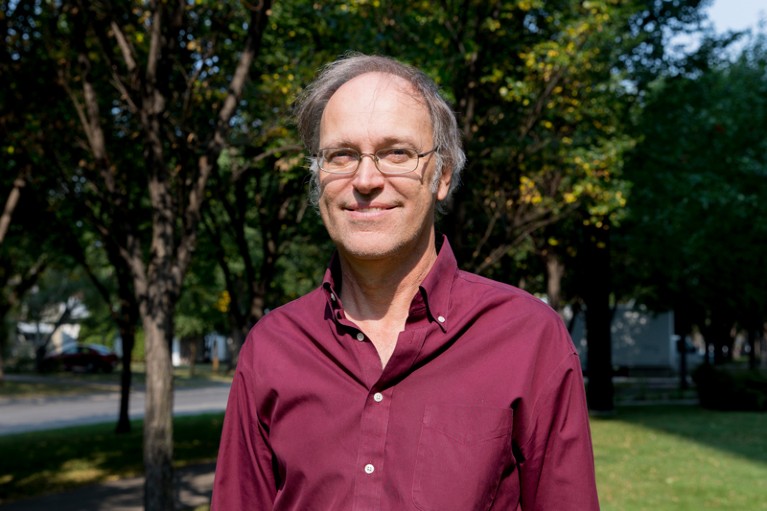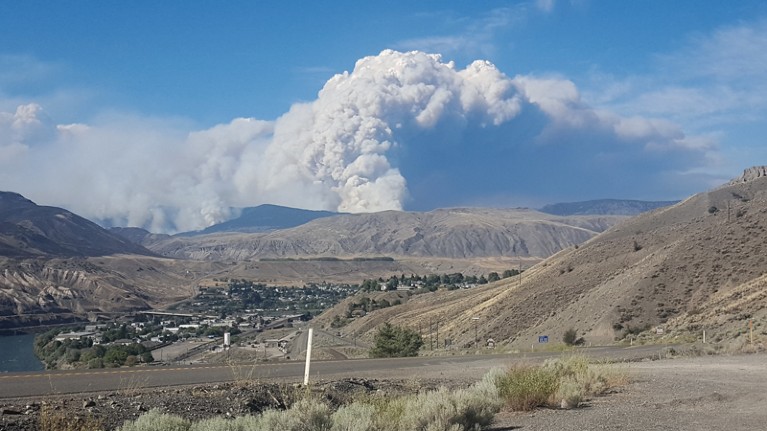
Mike Flannigan.Credit: Xinli Cai
Mike Flannigan is a professor with the Department of Renewable Resources at the University of Alberta, Canada. Here he speaks to Nature about his work and the boom in wildfires worldwide.
How did you get into wildfire research?
I’ve always been interested in fire. When I turned one year old, I burnt my finger on the candle of my birthday cake because I was fascinated by the flame. And I’ve been tasting fire ever since. You might call me a pyrophile.
I did an undergraduate physics degree at the University of Manitoba in Canada and, after a one-year course in meteorology, I worked as a weather forecaster for the national weather service from 1979 to 1981. I then joined the Canadian Forest Service (CFS) as a physical scientist. After completing a PhD in plant sciences at the University of Cambridge, UK, in 1993, I returned to work at CFS for 31 years. Now I’m a fire professor at Alberta.
What have you learnt from your research?
In Canada, the area burnt by wildfires has doubled since 1970. They previously burnt around one million hectares a year. Since 1990, we have been averaging more than 2.5 million hectares a year, and this is because of climate change. In the western United States, the area burnt has actually quadrupled since the 1970s, in large part because of climate change.
Has the increase created more opportunities for wildfire researchers?
Yes. Canada, for example, is developing a Can$50-million (US$37.6-million) satellite for detecting and monitoring wildfires. As a research team at Alberta, we hope that we will soon get Can$5 million in state-funded fire research. Things have changed in the field. We are actually getting funding now.

A wildfire burns near Ashcroft, Canada.Credit: Mike Flannigan
What kinds of scientist can enter the field?
Fire is a fairly broad topic. Meteorologists, physicists, atmospheric scientists, engineers, forestry specialists, geographers, computer-science programmers — you name it — could get into the field. But fire also has an operational side. Canada spends Can$800 million a year directly on fire management, so there are a lot of professional positions in fire management. Federal, provincial and state conservation agencies hire research scientists, technical analysts and field technicians. Forest services, parks and land-management agencies are also recruiting. If the topic of your thesis includes something directly or indirectly related to fire, then you have an opportunity to get a job.
What should the public know about fire?
Fire is a global issue. Around the world, 350 million to 450 million hectares of land — close to the size of India — burn every year. In many regions, we are seeing fires that are more difficult to extinguish, and we will probably continue to experience more catastrophic events and, unfortunately, more loss of life. As an international community, we have to learn to live with fire and to address it globally. Because people start some 90% of wildfires, we need to be careful and observant. If you see a wildfire, report it right away to the authorities. We should also consider volunteerism. Programmes such as Firewise USA and FireSmart in Canada help homeowners and communities to protect themselves against fire through education, guidelines and more. Such organizations are always looking for volunteers.


 These scientists are setting a forest on fire — and studying it with drones
These scientists are setting a forest on fire — and studying it with drones
 Wildfire science is at a loss for comprehensive data
Wildfire science is at a loss for comprehensive data
 Nature Spotlight on Canada
Nature Spotlight on Canada







